“Startlingly New! Wonderfully Different!” is how Chevrolet described the new models for ’53. This 1953 Bel Air Convertible with green leather interior is a loively example of the new look for that year. The new, redesigned look for ’53 looked fresh and exciting compared with the models that had served from 1949-52.
The reality was it wasn’t a totally new car and shared some internal parts and the chassis was the same. Looks wise there was a definite nod in the direction of its predecessor. Nevertheless it was a move in the right direction.
Bel Air now indicated the level of trim rather than a body style as it had previously, and it was top-of-the-line! Standard features included; rear fender skirts, chrome gravel shield and rocker panel trim, front and rear floor carpet (the 150 and 210 rubber matting), twin sun visors, two-tone cloth upholstery.
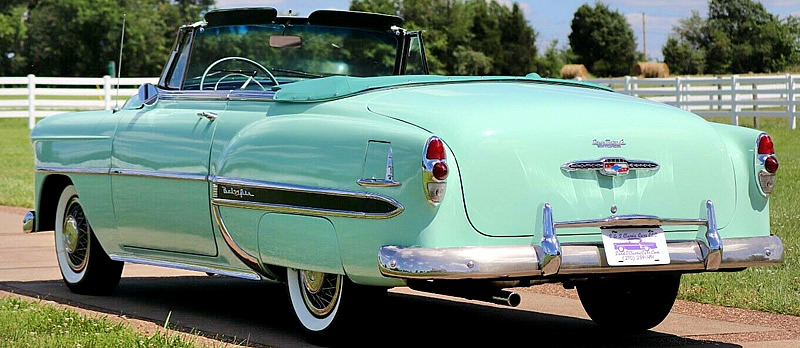
More distinctive, more glamorous than ever! The beautiful, new upholstery harmonizes with a variety of solid colors and two-tone combinations, is how Chevrolet described the new interiors in the Bel Air.
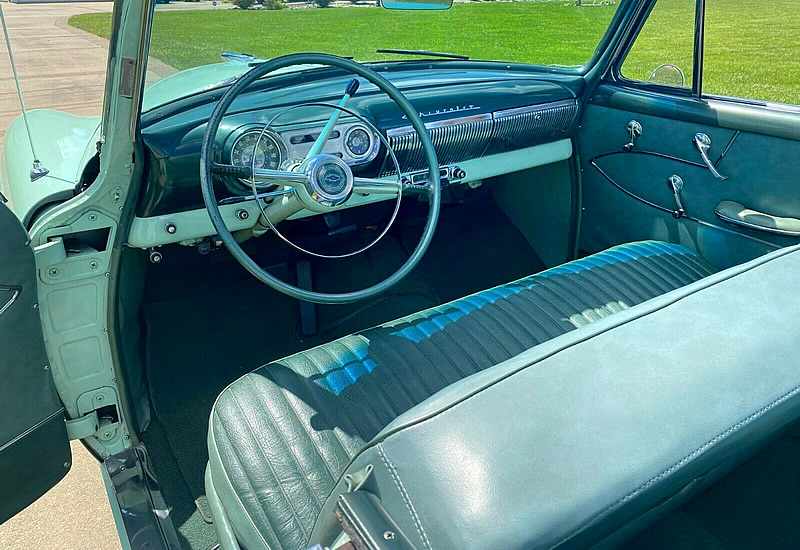
Presented here in Surf Green, guitarists among you will know this is an iconic color that appeared on guitars back in the fifties and is still popular today.
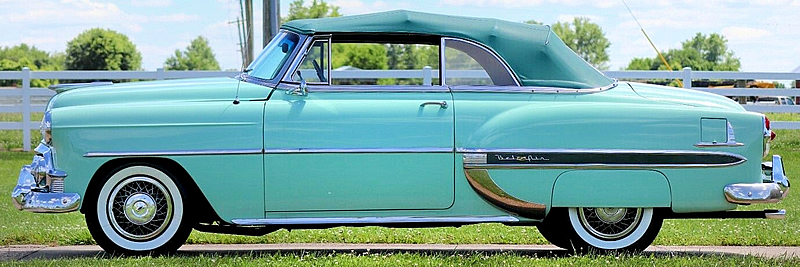
Power comes from the original 115 horsepower, 235 inline six paired with a powerglide automatic transmission. The latter would have cost the original owner of this car an additional $178 as the standard transmission was a 3-speed manual.
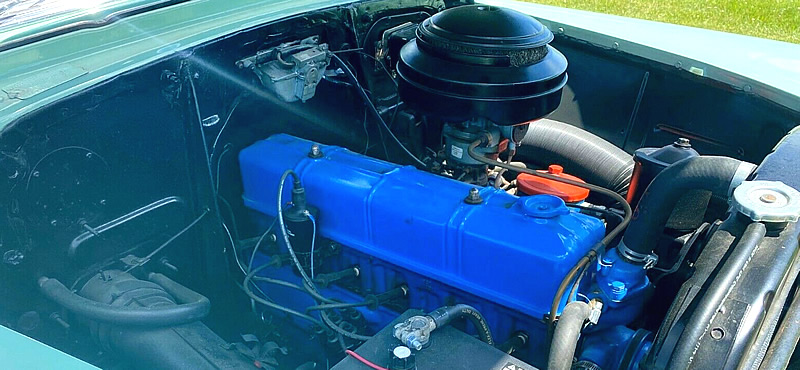
1953 saw the introduction of one-piece curved windshields. Previously they were flat and made from two pieces and joined in the center.
The 1953 Bel Air had a wheelbase of 102″, an overall length of 167.3″ and width of 69.8″.
There were now 13 Chevrolet models available spread over 3 series; The 150, 210 and the Bel Air.
SOME AVAILABLE CHEVROLET OPTIONS IN 1953
| Option | Price |
|---|---|
| Power steering | $178 |
| Heater and defrosted (under dash) | $40 |
| Air-Flow heater and defroster | $90 |
| Windshield washer | $12 |
| Autronic-Eye headlamp dimmer | $50 |
| Push-button AM radio | $65 |
| Signal seeking AM radio | $135 |
For the 1953 model year, Chevrolet produced 514,760 Bel Airs with 24,047 convertibles (model number 2434) at a base price of $2,175.
This ’53 Chevy is currently for sale on eBay. (follow the link for even more photos)

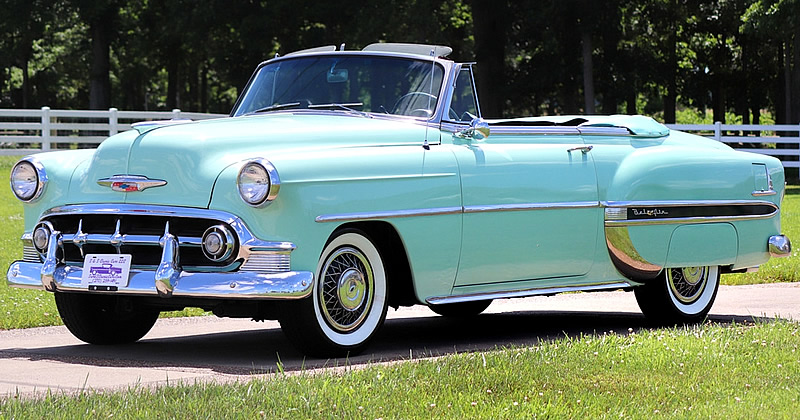
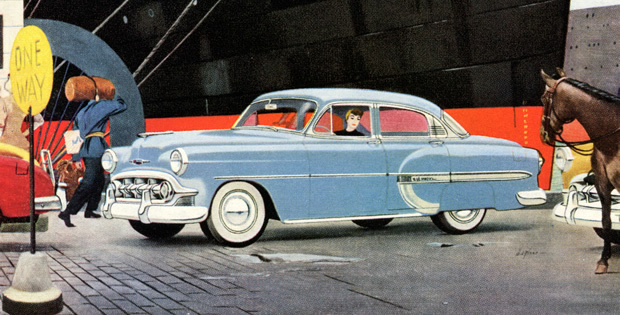
I own an all original ‘53 Bel Air with 42k actual miles. It’s the most comfortable seating and ride of any of the other classics I’ve owned.